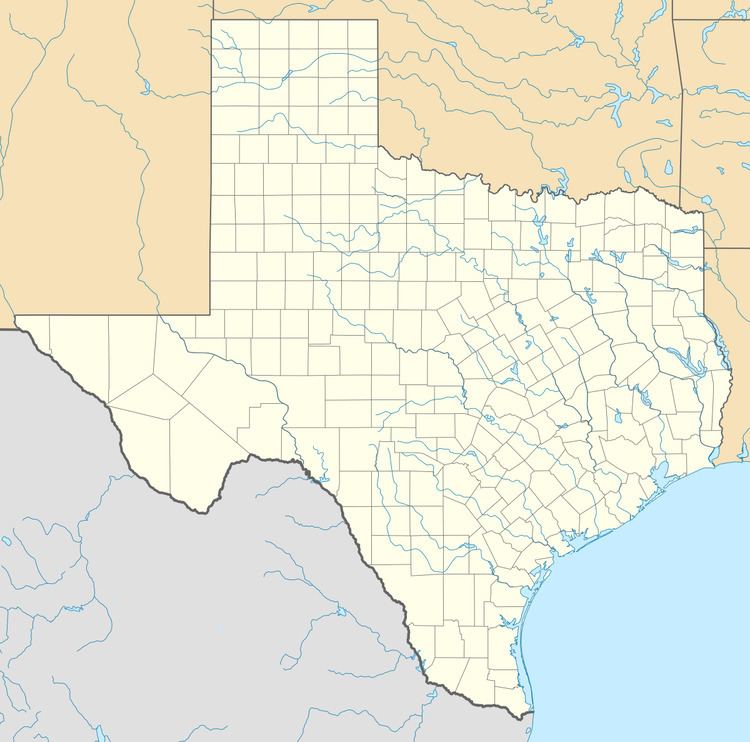Type Army Airfields In use 1940–present | Built 1940–1944 | |
 | ||
Controlled by United States Army Air Forces Garrison Army Air Forces Training Command | ||
Many United States Air Force personnel have spent some of their military service being trained in Texas at fields originally built during World War II. Be it basic military training at Lackland Air Force Base, technical training, officer training, or flight training at other facilities across the state. Texas is the home of the Air Education and Training Command (AETC) located at Randolph Air Force Base, near San Antonio.
Overview
This tradition of training goes back to the very beginnings of the Air Force, with early fight training being held at various Army camps and airfields in Texas prior to World War I, and in the 1920s and 1930s.
From the poorly armed and understaffed United States Army Air Corps that existed at the time the first bombs were dropped on Pearl Harbor, the United States produced, just a few years later, the greatest Air Force the world has ever seen. The effort to achieve this was unprecedented.
During World War II, the United States Army Air Forces (USAAF) established numerous airfields in Texas for training pilots and aircrews of USAAF fighters and bombers.
Most of these airfields were under the command of Fourth Air Force or the Army Air Forces Training Command (AAFTC) (A predecessor of the current-day United States Air Force's Air Education and Training Command). However the other USAAF support commands (Air Technical Service Command (ATSC); Air Transport Command (ATC) or Troop Carrier Command) commanded a significant number of airfields in a support roles.
To build the facilities needed to train personnel, a massive land acquisition program was carried out, but many cities offered land to the US Government (e.g., San Angelo for what became Goodfellow AFB) to entice the military to build a base and help the local economy.
Typically the airfields were built from scratch on farm or vacant land and contained several hundred buildings of all descriptions. These training fields were small self-contained towns that differed according to their use, but in many ways were the same. They varied in size from about 2,000 acres (8.1 km2) for a basic flight training base to more than 65,000 acres (260 km2) for a base used to teach gunnery. Thousands of men and women lived and worked on the bases either as trainers, trainees, support personnel, or family members.
The facilities vital to the training mission were constructed first and that part took about six months. Throughout the war, they were constantly improved to make living more comfortable and the training more efficient. Construction was of wood, tar paper, and non-masonry siding. The use of concrete and steel was limited because of the critical need elsewhere. Most buildings were hot and dusty in the summer and very cold in the winter.
Most fields had hangars, barracks, warehouses, hospitals, dental clinics, dining halls, and maintenance shops. There were libraries, social clubs for officers, and enlisted men, and stores to buy living necessities. Some training fields had swimming pools, all had sport fields.
It is still possible to find remnants of these wartime training fields. Many were converted into municipal airports, some are industrial parks, and others were retained as United States Air Force installations. Hundreds of the temporary buildings that were used survive today, and are being used for other purposes.
Texas, due to its warm climate and excellent year-round flying weather, had numerous training airfields constructed there. The following list is a compilation of the major and minor airfields that can be determined. Numerous auxiliary airfields were also built, mostly to handle the excess amount of air traffic at the major bases, but also so pilots could practice touch-and-go landings without disrupting the traffic pattern at the main bases. These auxiliary bases have not been included, mostly because they cannot be found or located and they have long since returned to agricultural use.
After the war, many of the airfields were returned to civil control. Others became United States Air Force bases. Some retained their training mission as part of Air Training Command; some became massive storage depots of reserve aircraft; others became front-line bases with Strategic Air Command and Tactical Air Command.
